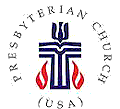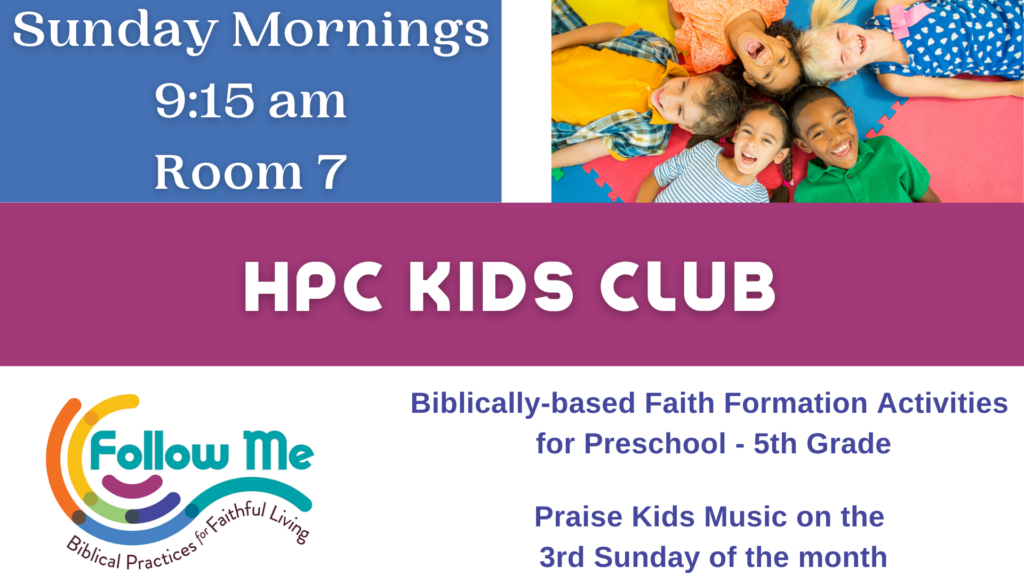For that one moment, ‘in and out of time’,
On that one mountain where all moments meet,
The daily veil that covers the sublime
In darkling glass fell dazzled at his feet.
There were no angels full of eyes and wings
Just living glory full of truth and grace.
The Love that dances at the heart of things
Shone out upon us from a human face
And to that light the light in us leaped up,
We felt it quicken somewhere deep within,
A sudden blaze of long-extinguished hope
Trembled and tingled through the tender skin.
Nor can this this blackened sky, this darkened scar
Eclipse that glimpse of how things really are[i].
This is how British poet and Anglican priest Malcom Guite describes our gospel text this morning. Today is Transfiguration Sunday, a week in the church year where we are wrapped in the glory of God in a cloud of shimmering mystery and overwhelming spectacle. The word “transfiguration” actually comes from the Greek metemorphothe, used in Matthew and Mark’s accounts of this mountaintop experience, conveying a powerful sense of change and transformation from the ordinary to a higher spiritual state[ii]. Luke’s gospel provides most of the same key elements, but focuses on the change of appearance to Jesus’ face and the “dazzling white” of his clothes, echoing the story of Moses meeting God on the mountain in Exodus 34, when he returned with a face that literally was shining.
Luke’s gospel prompts us, then, to pay attention to the appearances in this text. From a dramatic perspective, this truly is an extraordinary tale. Everything is described in epic proportions, from the costuming to the characters, and we imagine breathtaking scenery and cinematography that captivates our wildest imaginations with booming voices and sweeping clouds. The story of the transfiguration is larger than life, a scene made for poetic interpretation and dramatic performance.
Have you ever been a part of a theatrical production? There’s quite a lot that goes into it. So many things are carefully orchestrated and crafted to tell a story in a powerful and moving way. It truly is an art form. In the famous musical Chicago, the attorney Billy Flynn capitalizes on this concept in the courtroom. With singing and dancing, he lays out for Roxie Hart that the key to winning is to, quite simply, put on a great show, full of mystery and slights of hand. The goal is to:
Give ‘em the old razzle, dazzle, razzle dazzle ‘em
Give ‘em an act with lots of flash in it
and the reaction will be passionate.[iii]
Some may offer that this passage is meant to do just that – to spur in us a sense of wonder and amazement. It is a moment that follows a disturbing prediction of Jesus’ death and resurrection. We might imagine that the disciples were caught in a tension of confusion and anxiety about what this might mean. Eight days later, Jesus takes them up the mountain to pray, and lo and behold Moses and Elijah show up for a chat. The disciples, barely awake, are appropriately starstruck, evidenced by Peter’s feeble attempts to normalize it by offering to make dwellings. More drama ensues as they are overtaken by a cloud. Here, Jesus’ identity is revealed and exalted in as much or more of a dramatic fashion as it was in his baptism when the Holy Spirit ripped open the heavens. The disciples are called again to pay attention and listen to him. Now, the disciples are left speechless.
Theologically we have a word to express the idea of God’s goodness overwhelming us in a way that makes it indescribable: glory. Theologian Rolf Jacobson says:
Glory is just one of those things that can be hard to wrap your brain around, maybe because it’s a two-bit . . . word trying to say something about God. Little words have a hard time doing that; words like . . . grace . . . love . . . mercy . . . cross . . . righteous . . . forgiveness . . . friend . . . Oh, that is glory – all of it together[iv].
It can be easy to get caught up in the “razzle dazzle” of the mountaintop experience and simply experience it as a larger-than-life performance of a larger-than-life God. And while such a reading does inspire us to worshipful wonder, it limits in us the ability for this to be a story that leads us into the future. Remember what happened to Roxie Hart at the end of the musical? While the flash and glitter of the story exonerated her in her trail, her fame was short-lived as another spectacle came along moments later. Our text today, though, is not just a con-man’s slight of hand, or even impressively choreographed pageantry and show; there is real meaning behind it that continues to present to us an understanding of what it means to live in the reign of God, if we are willing to unpack the mystery of it.
In college, I took an elective honors seminary taught by one of my favorite Spanish professors titled the “literature of the fantastic.” We read short-stories by a variety of Latinx authors, including Gabriel Garcia Marques and Isabel Allende, in a genre known as magic realism. This style paints a realistic view of the modern world while also adding in magical and surreal elements. The results are jarring exercises for the imagination, and provocative commentary on the world. Professor Cláudio Carvalhaes offers that the transfiguration story is a lot like this form of literature, in that it is:
a real-magical story that has tremendous theological realities and social consequences[v].
That is to say, that the larger-than-life elements of the story help us think about it from a place where anything is possible, which allows us to re-order our own understandings of our actual realities, both the world as it is, and how we hope it could be.
On the mountaintop, Jesus, Moses and Elijah are:
wrapped up in glory! A glory that is shared, that illuminates each other, that strengthens each other’s lives, and gives meaning to the past and future events[vi].
This story helps us to re-order ourselves and our lives in light of God’s glory. Immediately after this text, the lectionary includes some optional verses, 37-42. At first glance they might seem disconnected, introducing a separate story. But with closer reading, they seem to point us to the importance of what work awaits Jesus, and us, after the mountaintop. The story continues like this:
37 On the next day, when they had come down from the mountain, a great crowd met him. 38 Just then a man from the crowd shouted, “Teacher, I beg you to look at my son; he is my only child. 39 Suddenly a spirit seizes him, and all at once he shrieks. It convulses him until he foams at the mouth; it mauls him and will scarcely leave him. 40 I begged your disciples to cast it out, but they could not.” 41 Jesus answered, “You faithless and perverse generation, how much longer must I be with you and bear with you? Bring your son here.” 42 While he was coming, the demon dashed him to the ground in convulsions. But Jesus rebuked the unclean spirit, healed the boy, and gave him back to his father.[vii]
As much as the glory of God was revealed on the mountaintop, it is also revealed here in Luke’s story, too, in the valley where real people are struggling. Carvalhaes even argues:
One of the lessons of this text is that the glory of God is only possible if lived together, in community . . . Glory is only possible if shared and that means that we are to share the light of Christ to the world, especially those placed in the shadows of our society.
These closing verses might be optional in the lectionary, but they are not optional for us if we are to understand this story as disciples. To be dazzled, then, is less about just being amazed and overwhelmed, and more about being inspired by our face-to-face experiences of God so that we might be more faithful followers of Jesus Christ. That we might listen to him, and follow his commands. In the story of Exodus, is it from this shining place that Moses shares the Ten Commandments, or as one children’s worship curriculum describes it, “The Ten Best Ways to Live.” God’s shining presence is not meant to be an amazing finale, but a stirring opening number. The transfiguration invites us to join God on the mountaintop, yes, but also in the valley afterwards, reflecting the hope and promise of the reign of God to all.
One of the best to understand this, I think, was the Rev. Dr. Martin Luther King, Jr.. On April 3, 1968, he delivered a stirring speech to city sanitation workers on strike in Memphis, Tennessee, titled “I’ve Been to the Mountaintop.” In it, he described the opportunity to view the world from the mountaintop with God, surveying different moments in history. And despite the many moments there might be to take in, he insisted that he was glad to be living in the one he was in. He said:
The nation is sick, trouble is in the land, confusion all around. That’s a strange statement. But I know, somehow, that only when it is dark enough can you see the stars. . . . And I see God working in this period of the twentieth century in a way that men in some strange way are responding. Something is happening in our world[viii].
In the midst of struggle, King saw hope, and he shared that vision, face shining, with the world in a way that was inspiring. He continued:
Now what does all this mean in this great period of history? It means that we’ve got to stay together . . . We’ve got to stay together and maintain unity[ix].
He laid out for those gathered a way to be together in the valley, united in peaceful, non-violent protest that would bring about change. His speech, given less than 24 hours before his assassination, ended like this:
Well, I don’t know what will happen now; we’ve got some difficult days ahead. . . . But it really doesn’t matter with me now, because I’ve been to the mountaintop. . . .
I just want to do God’s will. . . . And He’s allowed me to go up to the mountain. . . . I want you to know tonight . . . that we, as a people, will get to the Promised Land. . . . And so I’m happy tonight; I’m not worried about anything; I’m not fearing any man. Mine eyes have seen the glory of the coming of the Lord[x].
A few years ago, musical artists Common and John Legend wrote a song titled “Glory” for the movie Selma, connecting modern-day struggles with the events of Selma and King’s life and legacy. In it, they echo some of this speech and sing:
King pointed to the mountaintop and we ran up.
And, following a moment similar to being transfigured, they return inspired, saying:
they marched with the torch we gon’ run with it now.
From generation to generation, Moses to the Israelites, Jesus to the disciples, God’s glory continues to shine and inspire us to new ways of living. It comes to us in ways that might be overwhelming, larger than life, seemingly impossible to live up to, but nevertheless it comes. May we be so dazzled, that we cannot leave it behind, but instead take it with us into the valleys, with our faces shining because we have experienced the presence of God, and we can do nothing else but be a part of what God is doing in this world. Then, we will be living as those transfigured ourselves. Amen.
~sermon by Rev. Elizabeth Lovell Milford, Heritage Presbyterian Church, March 3, 2019
___________________________________________________________________________________________
[i] Ayodeji Malcom Guite, “Transfiguration,” Words That Listen: A Literary Companion to the Lectionary, J. Barney Hawkins IV and Ian S. Markham, editors, (New York: Church Publishing, 2018)
[ii] See Matt. 17:2, Mark 9:2]
[iii] “Razzle Dazzle” from Chicago, Songwriters: Fred Ebb and John Kander, Warner/Chappell Music, Inc.
[iv] Rolf A. Jacobson, Editor, Crazy Talk: A Not-So-Stuffy Dictionary of Theological Terms, (Minneapolis, MN: Augsburg Books, 2008).
[v] Cláudio Carvalhaes, “Commentary on Luke 9:28-36, (37-43),” Working Preacher, https://www.workingpreacher.org/preaching.aspx?commentary_id=2756, accessed 2/28/2019.
[vii] Luke 9:37-42, New Revised Standard Version.
[viii] Martin Luther King, Jr., “I’ve Been to the Mountaintop” Address, delivered at Bishop Charles Mason Temple, April 3, 1968. Speech text: https://kinginstitute.stanford.edu/king-papers/documents/ive-been-mountaintop-address-delivered-bishop-charles-mason-temple, backstory available at https://kinginstitute.stanford.edu/encyclopedia/ive-been-mountaintop, accessed 2/28/2019.
[ix] Ibid.
[x] Ibid.



